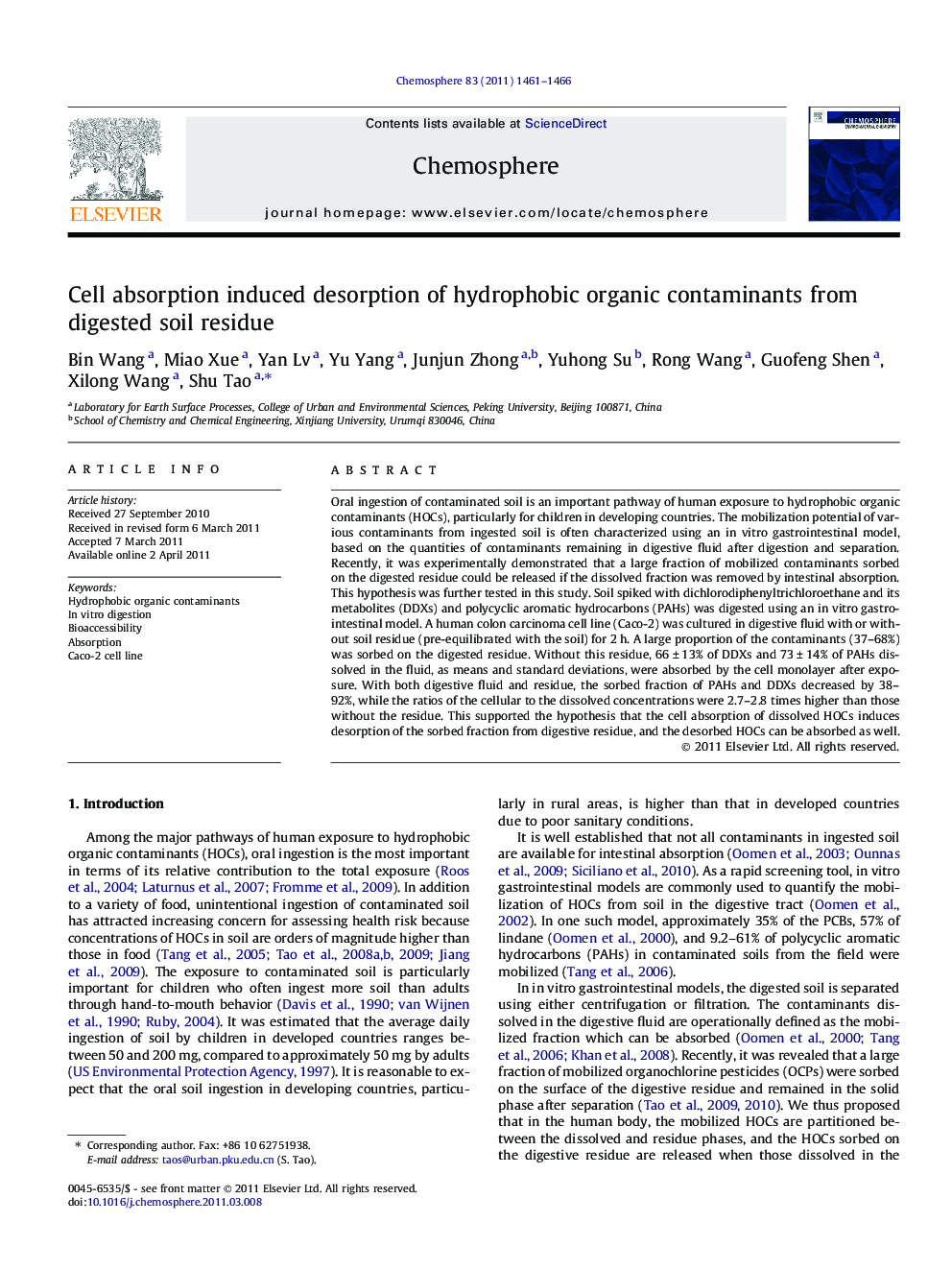| کد مقاله | کد نشریه | سال انتشار | مقاله انگلیسی | نسخه تمام متن |
|---|---|---|---|---|
| 4410640 | 1307557 | 2011 | 6 صفحه PDF | دانلود رایگان |

Oral ingestion of contaminated soil is an important pathway of human exposure to hydrophobic organic contaminants (HOCs), particularly for children in developing countries. The mobilization potential of various contaminants from ingested soil is often characterized using an in vitro gastrointestinal model, based on the quantities of contaminants remaining in digestive fluid after digestion and separation. Recently, it was experimentally demonstrated that a large fraction of mobilized contaminants sorbed on the digested residue could be released if the dissolved fraction was removed by intestinal absorption. This hypothesis was further tested in this study. Soil spiked with dichlorodiphenyltrichloroethane and its metabolites (DDXs) and polycyclic aromatic hydrocarbons (PAHs) was digested using an in vitro gastrointestinal model. A human colon carcinoma cell line (Caco-2) was cultured in digestive fluid with or without soil residue (pre-equilibrated with the soil) for 2 h. A large proportion of the contaminants (37–68%) was sorbed on the digested residue. Without this residue, 66 ± 13% of DDXs and 73 ± 14% of PAHs dissolved in the fluid, as means and standard deviations, were absorbed by the cell monolayer after exposure. With both digestive fluid and residue, the sorbed fraction of PAHs and DDXs decreased by 38–92%, while the ratios of the cellular to the dissolved concentrations were 2.7–2.8 times higher than those without the residue. This supported the hypothesis that the cell absorption of dissolved HOCs induces desorption of the sorbed fraction from digestive residue, and the desorbed HOCs can be absorbed as well.
► Contaminants sorbed on the digested residue can be released by intestinal absorption.
► This hypothesis was tested using in vitro gastrointestinal and cell absorption model.
► Caco-2 cell line was cultured in digestive fluid with and without soil residue.
► Concentrations were higher in cells with soil residue than those without the residue.
► Thus, the cell absorption of dissolved HOCs induces their desorption from residue.
Journal: Chemosphere - Volume 83, Issue 11, June 2011, Pages 1461–1466